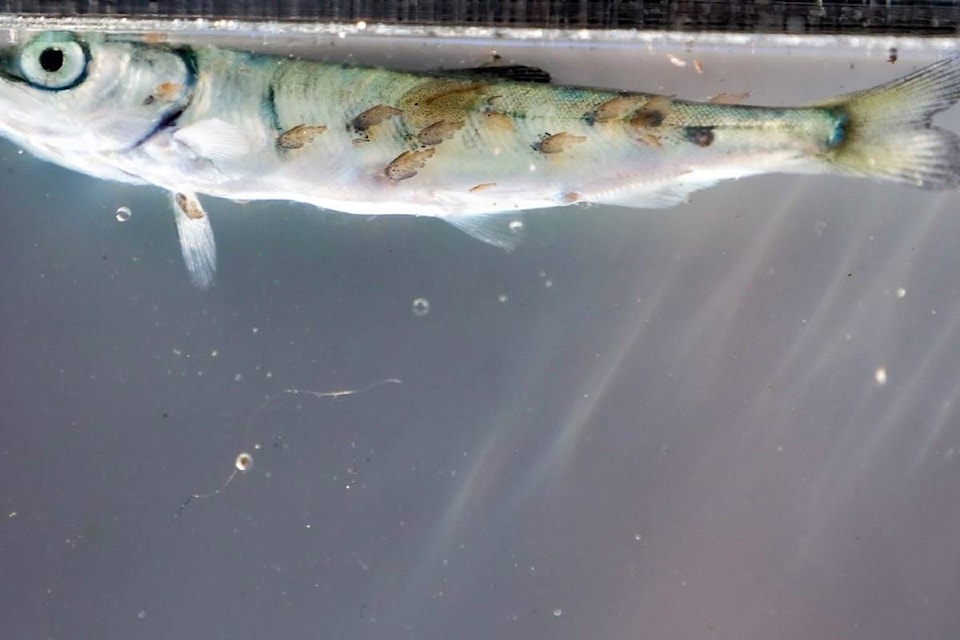An oceanic watchdog group has reported a massive outbreak of salmon lice in the Clayoquot Sound UNESCO Biosphere Reserve recently.
Clayoquot Action Campaigns stated that Cermaq Canada’s documentation on salmon lice for April showed the numbers of salmon lice on seven of their 14 Clayoquot farm sites are up to 10 times higher than the threshold which requires treatment. The regulatory threshold is three motile salmon lice per farm fish.
Director Bonny Glambeck said the sea lice number has become worse in recent years but the latest episode “is absolutely through the roof; off the charts.”
“This outbreak is an environmental disaster — we are seeing wild juvenile salmon carrying lethal loads of salmon lice,” said Glambeck, whose group keeps tabs on environmental issues such as salmon farming. “These fish have been given a death sentence. Studies show there is no way these fish will survive to spawn and reproduce.”
The Department of Fisheries and Oceans is aware of the excess sea lice at Cermaq’s facilities, as it regularly conducts assessments. Communications adviser Michelle Rainer said they’ve had an ongoing discussion with Cermaq since January 2018 about measures to reduce sea lice.
Under the Pacific Aquaculture Regulations, DFO requires salmon farming companies to regularly monitor and manage sea lice levels at their facilities in British Columbia. Companies must submit a lice reduction plan if monitoring shows levels higher than the regulatory threshold during the wild salmon outmigration period from March 1 to June 30 of each year.
Salmon farming companies, Rainer said, use an in-feed therapeutant called SLICE (emamectin benzoate) to reduce lice abundance. In cases where the use of SLICE does not result in adequate reduction of sea lice, companies can apply to the province for a permit to use alternative treatments, including Paramove, a hydrogen peroxide bath.
Glambeck said none of the treatments are working at all.
“We don’t expect the new pesticides that they want to use will work,” said Glambeck. “It’s not working in Norway right now. Basically the industry is unable to control sea lice. So that’s why we want to see these farms come out of the oceans.”
Glambeck added that without salmon farms, wild salmon would not encounter salmon lice until they are adults, big enough to handle them. Juvenile salmon can only carry a load of one louse per gram of body weight — even two lice per smolt is a lethal load, said Glambeck.
The DFO is investigating the management of lice at farms in Clayoquot by Cermaq Canada to determine if there has been non-compliance with the licence conditions. Rainer said they cannot comment further at this time.
Cermaq Canada’s managing director, David Kiemele, said the company takes this matter very seriously and is actively addressing it.
“We have removed significant numbers of fish from several farms and continue to remove additional fish and treat remaining farms as quickly as possible,” he said. “Longer-term, Cermaq has committed to a $12 million state-of-the-art lice management barge that will be in place early next year, which will allow us to prevent this repeating itself in the future.”



